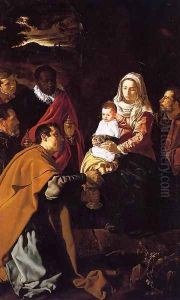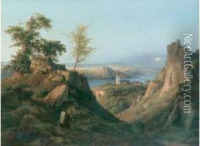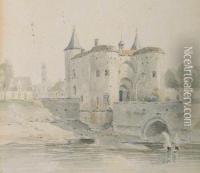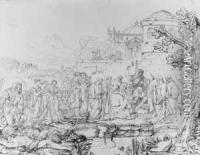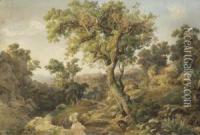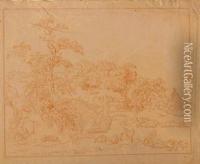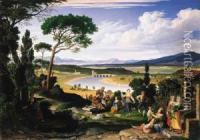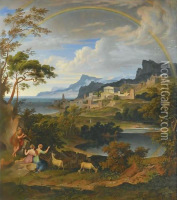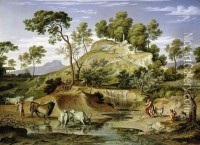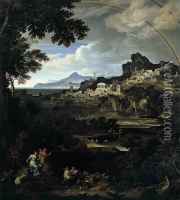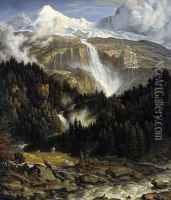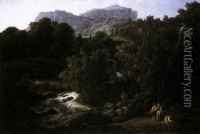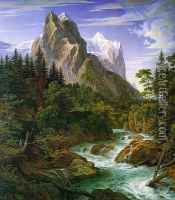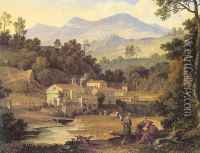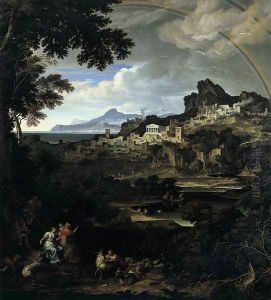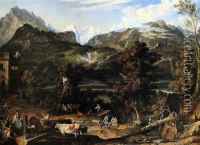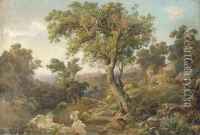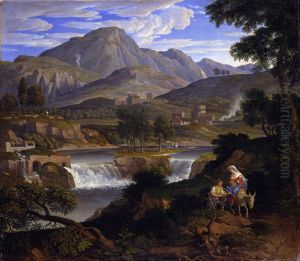Joseph Anton Koch Paintings
Joseph Anton Koch was a distinguished Austrian painter, primarily known for his landscape paintings that blend Romantic sensibilities with classical composition. Born on July 27, 1768, in Obergiblen, Tyrol, he was one of the key figures in the development of landscape painting in the early 19th century. His work often reflected the grandeur and drama of nature, influenced by the ideals of the Enlightenment and the artistic principles of the Renaissance and Baroque periods.
Koch's early life was spent in the Austrian Alps, where he developed a profound appreciation for the majesty of nature. This deep connection with the natural world would become a recurring theme throughout his artistic career. He initially received a monastic education but left to pursue his passion for art. In 1785, he moved to Stuttgart, where he studied at the Hohe Karlsschule, a prestigious academy. However, his uncompromising personality and commitment to artistic integrity often put him at odds with the academy's authorities.
In 1791, Koch relocated to Strasbourg and later to Basel. His journey eventually led him to Rome in 1795, which was a pivotal moment in his career. Rome's classical ruins and the Italian landscape had a significant impact on his work. He became associated with a group of German artists residing in Rome, known as the Nazarenes. This group sought to revive the spirituality and purity they found in medieval and early Renaissance art. While Koch shared their appreciation for the art of the past, he did not fully subscribe to their religious motivations. Instead, he focused on integrating the heroic nature of classical landscapes with contemporary Romantic themes.
Koch's paintings are characterized by their meticulous detail, dramatic use of light, and rigorous composition. Some of his most notable works include the series of 'Heroic Landscapes' and his illustrations for Dante's 'Divine Comedy.' His landscapes are not mere representations of nature but are imbued with a sense of history and mythology.
Despite his success, Koch's life was marked by financial struggles, and he never achieved significant wealth. He continued to paint and inspire other artists until his death on January 12, 1839, in Rome. Joseph Anton Koch's legacy endures in the way his art bridges the gap between neoclassicism and romanticism, influencing generations of landscape painters who sought to capture the sublime essence of the natural world.
